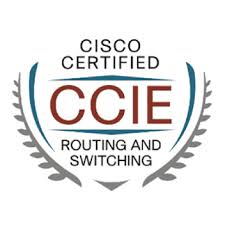- 48-49, 3rd floor, Jai Ambey Nagar, Opp. Jaipur Hospital, Tonk Rd, Jaipur
- (+91) 8094336633, (+91) 9057015701
- careers@zeetronnetworks.com
CCIE Training in Jaipur
-

CCIE
Zeetron Networks offer the most popular CCIE Routing and Switching certification training in Jaipur, India. Organization will ensure successful preparation for an expert level knowledge and pass the CCIE certification lab exam in your first attempt.
Our Certified experts and working professional instructors demonstrate their extensive experience and knowledge with an impeccable teaching methodology to help students in building their concepts on routing and switching technologies. Institute offers certified and working professional trainers who have years of industry experience.
-
WHAT ARE THE OUTCOMES OF CCIE TRAINING COURSE?
- Software architecture differences between IOS and IOS XE
- Cisco express forwarding and routing concepts
- Network challenges in complex network environments.
- Performing expert level IP operations, TCP operations, UDP operations
- Using IOS troubleshooting tools
- Operations and implementation related to LAN switching technologies
- Layer 2 and Layer 3 technologies
- Implementing RIP [v2 and v6], EIGRP [for IPv4 and IPv6], OSPF [v2 and v3]
- Implementing BGP
- Implementing ISIS [for IPv4 and IPv6]
- Implementing VPN Technologies
- Tunneling operations and verifications.
- Enabling Device security
- Operations related to Network security
- Quality of service operations
- Network services features and operations
- You will become qualified & competent to apply for job positions like Senior Network Engineer, Network Specialist, Network Experts in respectable organizations
Who Can Do This Course?
- Freshers
- BE/ BSc Candidate
- Any Engineers
- Any Graduate
- Any Post-Graduate
- Working Professionals
Why CCIE?
CCIE – Cisco Certified Internetwork Expert is the most prestigious certification in the Networking Industry. Our CCIE Training Course in Jaipur has intense classroom-based lectures and provides numerous Lab sessions. During our CCIE Training Course, you will gain profound knowledge about how to plan, operate and troubleshoot complex, converged network infrastructures.
Zeetron Networks CCIE Training course curriculum adheres to CCIE (R&S) Certification. Therefore, you will a systematic study plan & rigorous Lab practice for thorough preparation of CCIE (R&S) Certification. CCIE R & S Certification Course will help you to configuring and troubleshooting a complex and converged network infrastructure.
At Zeetron Networks career center Training our environment is too good for professional, individual, corporate, live project training and industrial training.
CCIE Certification was started with an aim to polish and advance the technical skills of Network Engineers worldwide, giving them an opportunity to update their technical skills and knowledge about Cisco products and enabled networks. Being the highest-paid and most demanded certification of the world, CCIE has allowed network engineers to maintain and increase their worth as a highly-skilled IT professionals in the world.
- Continuous software delivery
- Less complex problems to fix
- Faster resolution of problems
- Faster delivery of features
- More stable operating environments
- More time available to add value (rather than fix/maintain)
There is a lot of demand for DevOps professionals, but currently, there are not enough people to meet the desired requirements for DevOps roles and responsibilities. This leaves a huge window of opportunity for anyone seeking to make a mark for himself and DevOps can be a good career opportunity for them.
What You Will Learn?
CCIE Training Course concentrates on the expert level aspects of Networking. During the course, you will become skilled with the following topics:
Configure troubleshoot complex enterprise network solutions, Cisco IOS, Advanced IP Addressing eBGP, Advanced routing, EIGRP, OSPF, QoS, Layer 2, IPv4, Layer 3, IPv6, MPLS, Multicast, HSRP, VRRP, NTP, DHCP, WLAN, LAN and WAN, VLANs, trunks, spanning-tree, and Etherchannels, Configuration of secure routing Solutions, Troubleshoot and optimize core complex network solutions.
Throughout the CCIE Training course, we keep highlighting the importance of Practical Lab Sessions. Extensive Lab practice is absolutely essential for clearing the CCIE certification. We have modern Training rooms with digital writing pads, AC, Wi-Fi and Projectors. Our Labs facilities are equipped with the latest Cisco networking equipment and open 24*7 for additional practice at your convenience.
CCIE Course
Network Principles
Network theory
Network implementation and operation
Network troubleshooting
